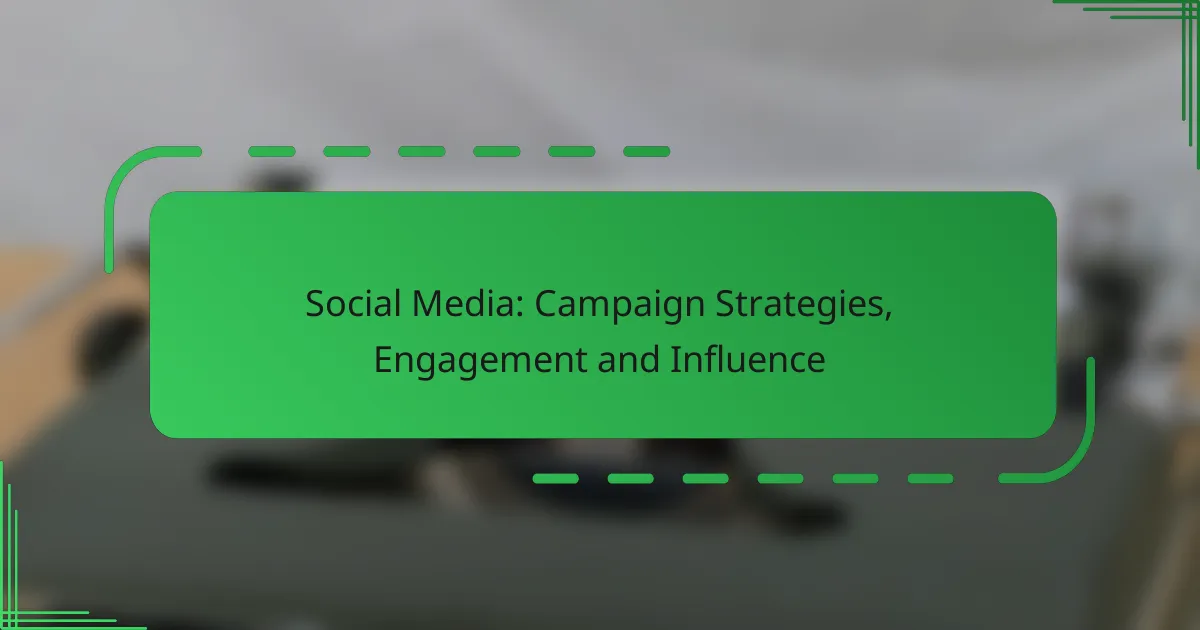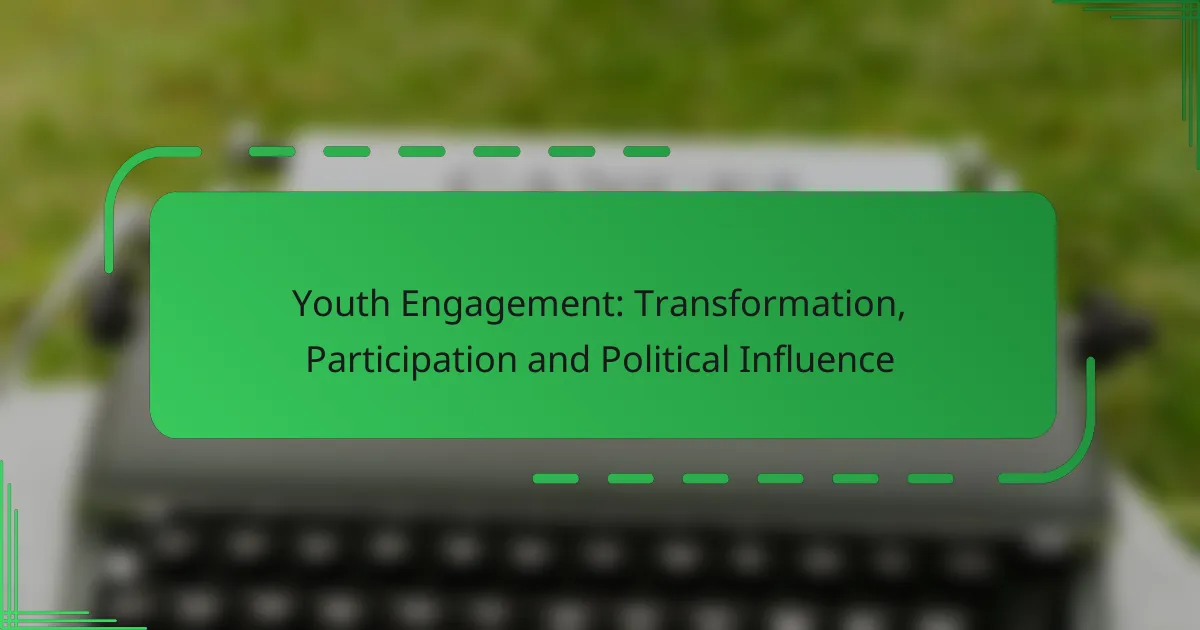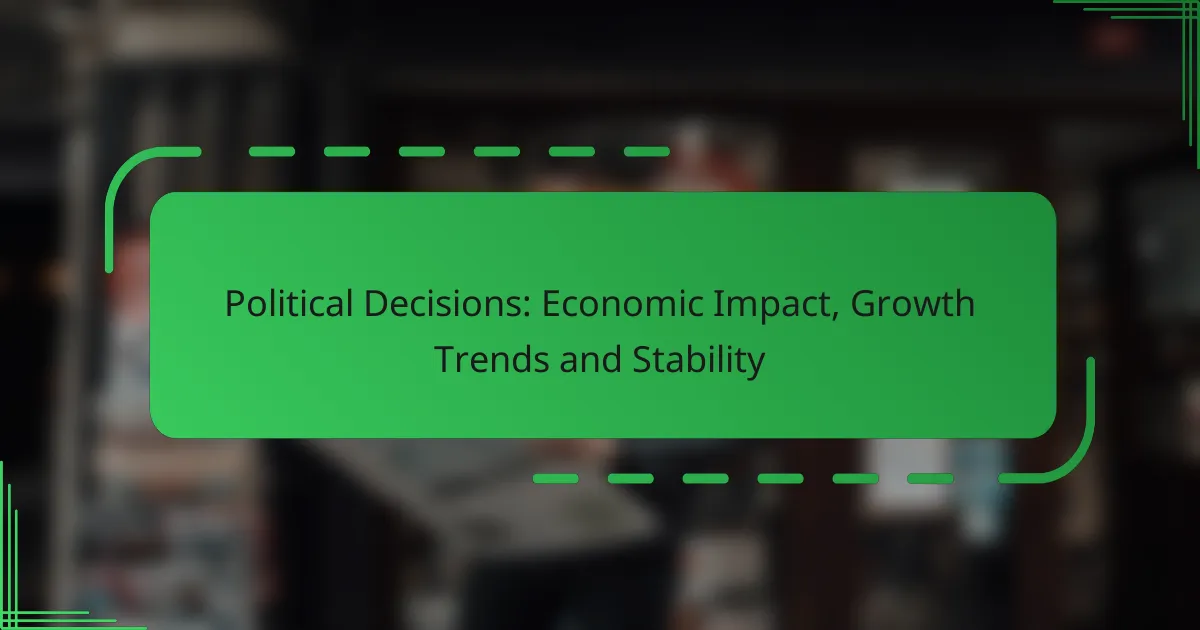In today’s digital landscape, effective social media campaign strategies are essential for engaging audiences and maximizing influence. By leveraging tailored content, partnerships, and data insights, brands can foster community interaction and enhance their reach across various platforms. Engaging content that resonates with users, along with real-time responses and user-generated contributions, further boosts engagement and drives desired actions.
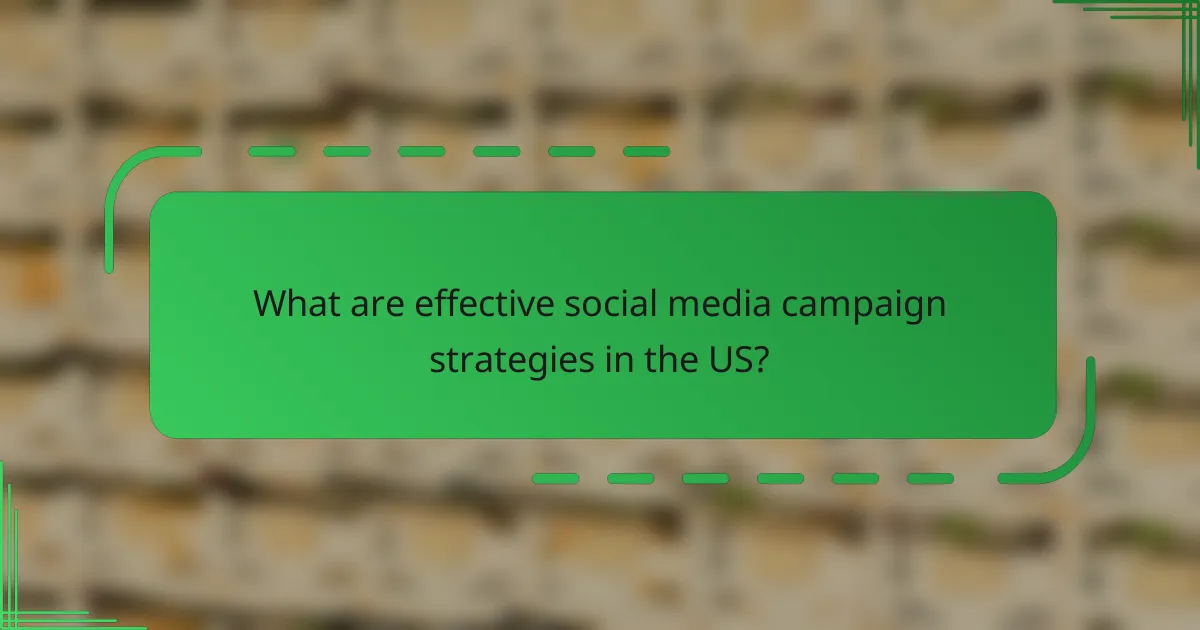
What are effective social media campaign strategies in the US?
Effective social media campaign strategies in the US focus on engaging audiences through tailored content, partnerships, and data insights. These strategies leverage various platforms to maximize reach and influence while fostering community interaction.
Content marketing integration
Integrating content marketing into social media campaigns enhances brand storytelling and audience engagement. This approach involves creating valuable and relevant content that resonates with your target demographic, such as blog posts, videos, and infographics shared across social platforms.
To implement this, ensure your content aligns with your overall marketing goals and addresses the interests of your audience. Regularly analyze engagement metrics to refine your content strategy and improve performance.
Influencer partnerships
Collaborating with influencers can significantly boost your campaign’s visibility and credibility. Influencers have established trust with their followers, making their endorsements more impactful than traditional advertising.
Choose influencers whose values align with your brand and who engage with your target audience. Consider micro-influencers for niche markets, as they often yield higher engagement rates and more authentic connections.
Data-driven targeting
Data-driven targeting involves using analytics to identify and reach specific audience segments effectively. By analyzing user behavior, demographics, and preferences, you can tailor your campaigns to meet the needs of your audience.
Utilize tools like Facebook Insights or Google Analytics to gather data and refine your targeting strategies. Regularly adjust your campaigns based on performance metrics to optimize engagement and conversion rates.
Cross-platform promotions
Cross-platform promotions enhance your campaign’s reach by leveraging multiple social media channels. This strategy ensures consistent messaging while tapping into the unique audiences of each platform.
For example, share a video on Instagram, promote it on Twitter, and create a discussion on Facebook. This approach not only increases visibility but also encourages audience interaction across different platforms.
Seasonal campaigns
Seasonal campaigns capitalize on holidays and events to engage audiences with timely and relevant content. These campaigns can drive traffic and sales by aligning your messaging with the emotions and interests of the season.
Plan your seasonal campaigns well in advance, considering key dates and trends. Use countdowns, themed promotions, and user-generated content to create excitement and encourage participation from your audience.
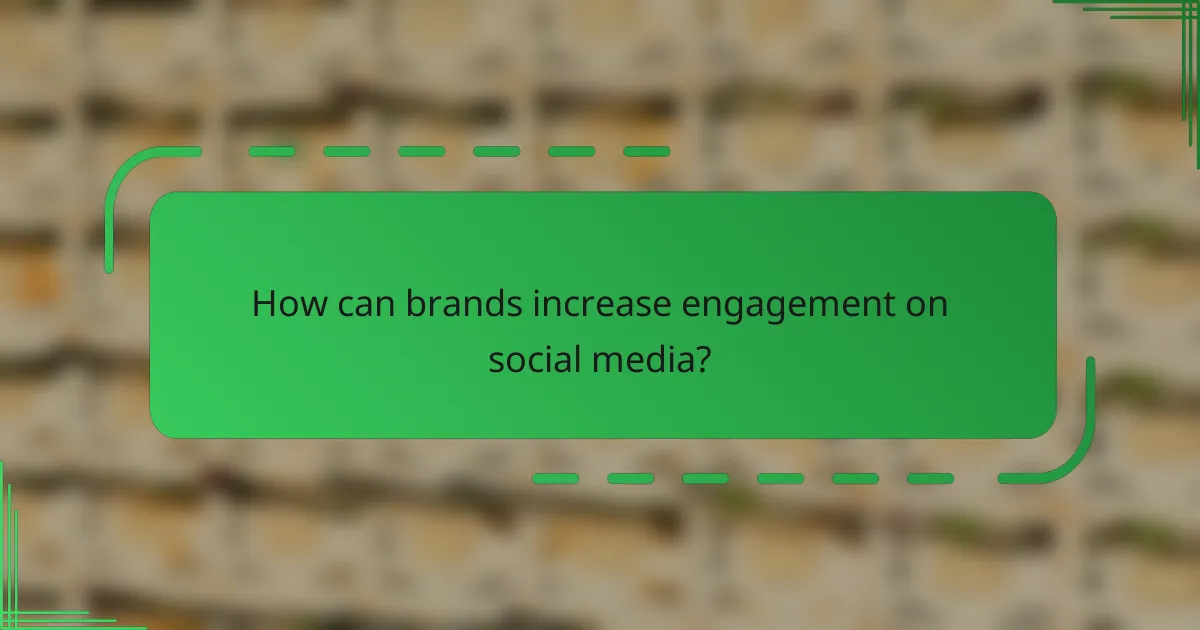
How can brands increase engagement on social media?
Brands can enhance engagement on social media by creating content that resonates with their audience and encourages interaction. Effective strategies include using interactive elements, responding in real-time, leveraging user-generated content, and conducting polls and surveys.
Interactive content
Interactive content, such as quizzes, games, and augmented reality experiences, captivates users and encourages them to participate actively. This type of content not only entertains but also provides valuable insights into audience preferences and behaviors.
For example, a fashion brand might create a virtual try-on feature that allows users to see how clothes look on them. This not only boosts engagement but can also lead to higher conversion rates.
Real-time responses
Responding to comments and messages in real-time fosters a sense of community and shows that a brand values its audience. Quick replies can significantly enhance customer satisfaction and loyalty.
Brands should aim to respond to inquiries within a few hours, if not sooner. Utilizing chatbots for immediate responses can help manage high volumes of interactions while maintaining engagement.
User-generated content
User-generated content (UGC) involves sharing content created by customers, such as reviews, photos, or videos featuring the brand’s products. This strategy builds trust and authenticity, as potential customers often relate more to their peers than to the brand itself.
Encouraging UGC can be as simple as hosting a contest or creating a specific hashtag for customers to use. Brands that showcase UGC on their platforms can significantly boost engagement and community involvement.
Polls and surveys
Polls and surveys are effective tools for gathering feedback while engaging the audience. They invite users to share their opinions and preferences, making them feel valued and involved in the brand’s decision-making process.
Brands can use platforms like Instagram Stories or Twitter to conduct quick polls, asking questions about product preferences or future offerings. Keeping these interactions light and fun can lead to higher participation rates and deeper connections with the audience.
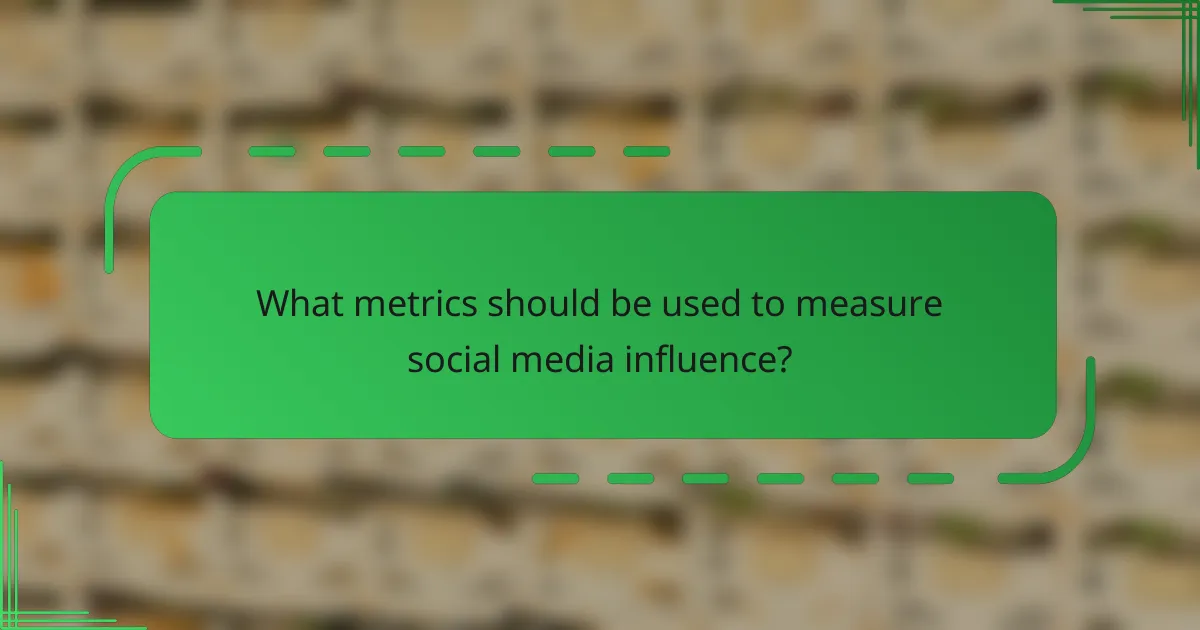
What metrics should be used to measure social media influence?
To effectively measure social media influence, focus on metrics that reflect engagement, reach, conversions, and brand sentiment. These indicators provide insights into how well your content resonates with the audience and drives desired actions.
Engagement rate
Engagement rate is a key metric that indicates how actively users interact with your content. It is typically calculated by dividing the total engagement (likes, shares, comments) by the total followers or reach, then multiplying by 100 to get a percentage.
A high engagement rate suggests that your audience finds your content valuable and is likely to share it, amplifying your influence. Aim for engagement rates that are in the low to mid-single digits for most platforms, though this can vary by industry.
Reach and impressions
Reach refers to the total number of unique users who see your content, while impressions count how many times your content is displayed, regardless of whether it was clicked. Both metrics are crucial for understanding the visibility of your posts.
To maximize reach, consider using targeted ads or collaborating with influencers who have a relevant audience. Monitoring these metrics helps you assess the effectiveness of your campaigns and adjust your strategies accordingly.
Conversion tracking
Conversion tracking measures the number of users who take a specific action after interacting with your social media content, such as making a purchase or signing up for a newsletter. Setting up conversion tracking requires integrating your social media platforms with your website analytics.
Utilize tools like Google Analytics to track conversions from social media campaigns. A conversion rate of around 1-3% is common for many industries, but this can vary widely based on your goals and audience targeting.
Brand sentiment analysis
Brand sentiment analysis evaluates how users feel about your brand based on their interactions and comments on social media. This metric can be assessed through sentiment analysis tools that categorize mentions as positive, negative, or neutral.
Understanding brand sentiment helps you identify areas for improvement and gauge the impact of your campaigns. Regularly monitoring sentiment can guide your content strategy and enhance your overall influence in the market.
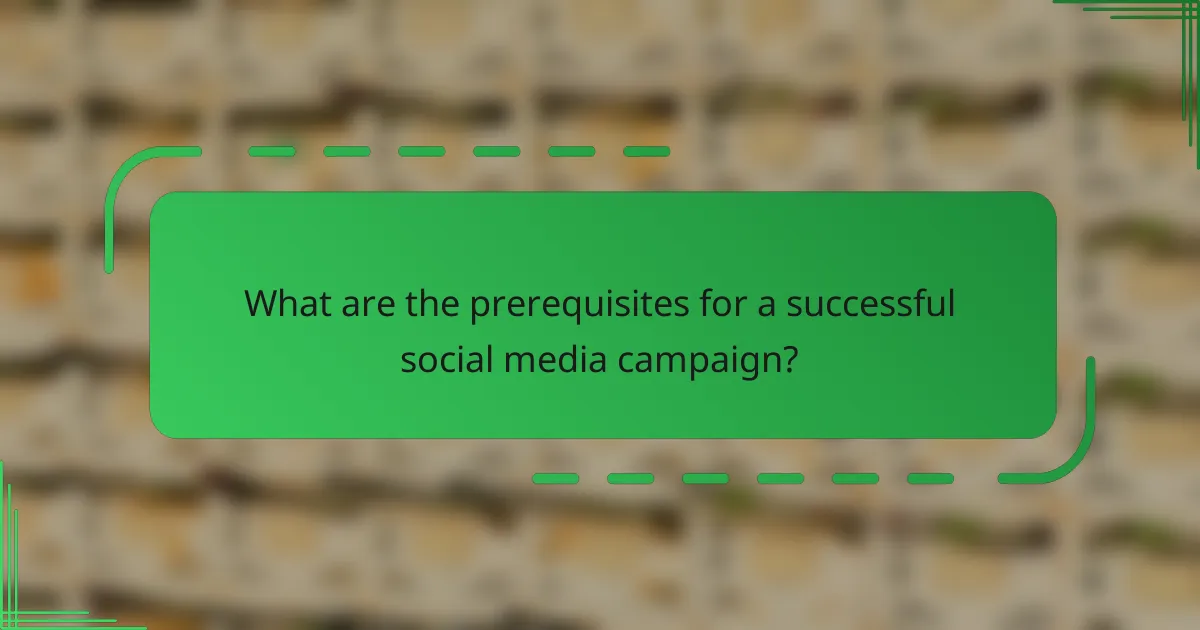
What are the prerequisites for a successful social media campaign?
Successful social media campaigns require a clear understanding of objectives and thorough research of the target audience. These elements ensure that the campaign is focused, relevant, and capable of engaging users effectively.
Clear objectives
Establishing clear objectives is essential for guiding a social media campaign. Objectives should be specific, measurable, achievable, relevant, and time-bound (SMART). For example, a campaign might aim to increase brand awareness by 20% within six months.
When setting objectives, consider what you want to achieve—whether it’s boosting engagement, driving website traffic, or generating leads. Each goal should align with your overall marketing strategy and be communicated clearly to all team members involved in the campaign.
Target audience research
Understanding your target audience is crucial for tailoring content that resonates. Conducting thorough audience research involves analyzing demographics, interests, and online behaviors. Tools like surveys and social media analytics can provide insights into who your audience is and what they care about.
Segment your audience into distinct groups based on their characteristics and preferences. This allows for more personalized messaging and content that speaks directly to their needs. For instance, a campaign targeting millennials might focus on platforms like Instagram and TikTok, while one aimed at professionals may prioritize LinkedIn.
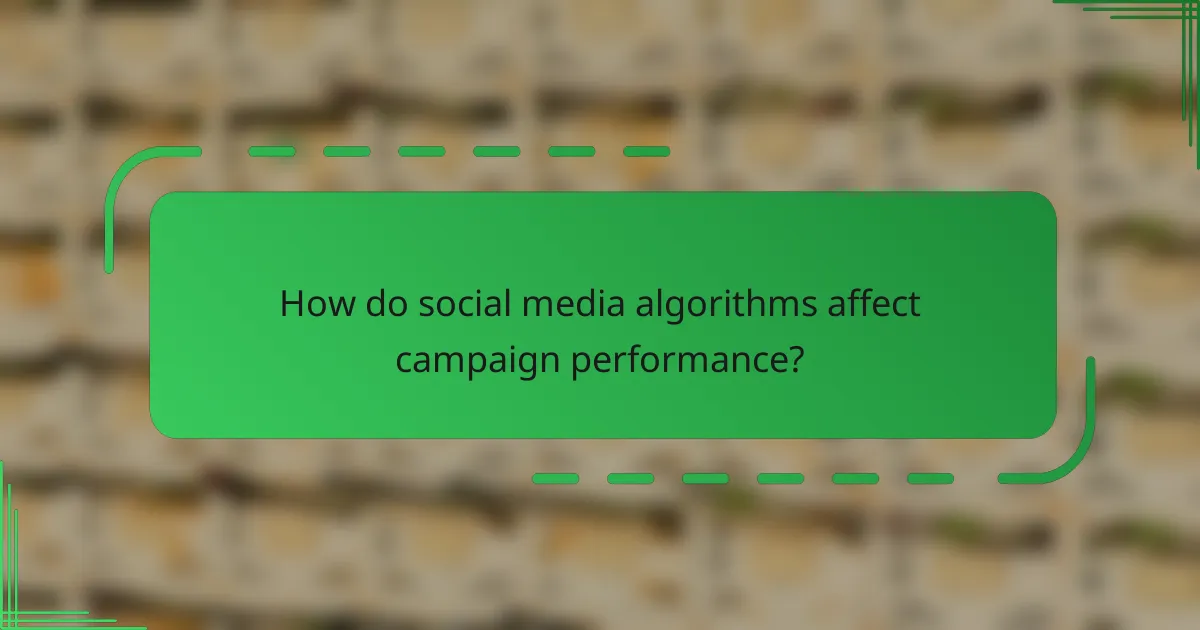
How do social media algorithms affect campaign performance?
Social media algorithms play a crucial role in determining how well a campaign performs by influencing content visibility and user engagement. These algorithms prioritize content based on various factors, which can significantly impact reach and interaction rates.
Content visibility
Content visibility refers to how often and to whom your posts are shown on social media platforms. Algorithms assess factors such as relevance, recency, and user preferences to decide which posts appear in feeds. For example, a post that receives quick engagement may be shown to a larger audience compared to one that does not.
To enhance visibility, focus on creating high-quality, engaging content that resonates with your target audience. Using relevant hashtags and posting at optimal times can also improve the chances of your content being seen. Avoid overly promotional posts, as these may be deprioritized by algorithms.
Engagement-driven ranking
Engagement-driven ranking means that social media platforms prioritize content that generates interaction, such as likes, comments, and shares. The more engagement a post receives, the higher it ranks in users’ feeds. This creates a feedback loop where popular content continues to gain visibility.
To boost engagement, encourage audience interaction through questions, polls, or calls to action. Monitor your analytics to identify which types of content perform best and adjust your strategy accordingly. Remember that genuine interactions often lead to better algorithmic favor than artificial engagement tactics.
